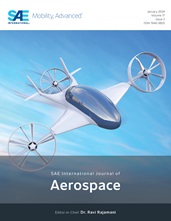Three-Dimensional Thermal Study on Lithium-Ion Batteries in a Hybrid Aircraft: Numerical and Experimental Investigations
- Content
- The range of an aircraft is determined by the amount of energy that its batteries can store. Today, larger batteries are used to increase the range of electric vehicles, although energy efficiency decreases as the weight of the vehicles increases. Among the elements, lithium (Li) is the lightest and has the highest electrochemical potential. Therefore, the use of Li-ion batteries is recommended for hybrid aircraft. In addition, Li-ion batteries are the most common type of battery that is used in portable electronic devices such as smartphones, tablets, and laptops. However, Li-ion batteries may explode due to temperature. Therefore, the thermal analysis of Li-ion batteries was investigated both experimentally and numerically. Li-ion batteries were connected in series (the number is 9). Noboru’s theory of heat generation was discussed in the estimation of energy data. Computations were handled in three dimensions while the second-order upwind scheme and SIMPLE (Semi-Implicit Method for Pressure-Linked Equations) algorithm were used in the simulation studies. The Laminar model was used under natural convection in computational fluid dynamics (CFD) analysis. Experimental studies were compared with the consistency of the CFD analysis, and the CFD analysis was found to be accurate. According to the results, the ideal operating range of Li-ion batteries was found to be 20-40°C.
- Pages
- 12
- Citation
- Yetik, O., and Karakoc, T., "Three-Dimensional Thermal Study on Lithium-Ion Batteries in a Hybrid Aircraft: Numerical and Experimental Investigations," SAE Int. J. Aerosp. 13(2):213-223, 2020, https://doi.org/10.4271/01-13-02-0016.
